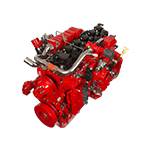Oct . 22, 2024 00:19 Back to list
Understanding the Essential Parts of Brake Drum Systems for Effective Vehicle Performance
Understanding Brake Drum Components The Heart of Your Vehicle’s Stopping Power
When it comes to vehicle safety, the braking system stands out as one of the most critical components. Among the various types of braking systems used in vehicles, drum brakes are widely employed in many older models as well as in some contemporary vehicles, particularly in the rear wheels. Understanding brake drum components is essential for both vehicle owners and enthusiasts who wish to maintain or upgrade their braking systems effectively.
What is a Brake Drum?
A brake drum is a cylindrical component that houses the brake shoes, which are key players in the braking process. When the brake pedal is pressed, hydraulic pressure pushes the brake shoes against the interior surface of the drum, creating friction that slows down or stops the vehicle's wheels.
Main Components of a Brake Drum System
1. Brake Drum The main body of the drum brake is the brake drum itself, usually made from cast iron or aluminum. Its outer surface rotates with the wheel, and the inside surface is where the brake shoes make contact to create friction. Brake drums are designed to withstand high temperatures generated during braking.
2. Brake Shoes These are curved, metal-backed friction components lined with a friction material that presses against the drum when braking. Depending on the vehicle design, there can be one or two brake shoes per drum. The combination of their materials and design contributes significantly to braking efficiency and fade resistance.
3. Wheel Cylinder The wheel cylinder is a hydraulic component that expands to push the brake shoes outward against the drum. Comprising two pistons, the wheel cylinder converts hydraulic pressure from the brake lines into mechanical force. This mechanism is crucial for ensuring even and powerful contact between the brake shoes and drum.
brake drum components

4. Return Springs Return springs serve a vital role in retracting the brake shoes back to their original position when the brakes are released. This ensures that the shoes do not remain in contact with the drum, thereby preventing unnecessary wear and overheating when the brakes are not engaged.
5. Adjuster Mechanism To maintain optimal braking performance, an adjuster automatically compensates for the wear of the brake shoes. Over time, as the friction material wears down, the adjuster ensures that the distance between the shoes and the drum remains minimal, maintaining effective braking force.
6. Dust Boot and Seals These components protect the wheel cylinder and other internal parts from dirt, moisture, and contaminants. They help prolong the life of the braking system and ensure reliable performance by preventing corrosion and wear on critical components.
Benefits of Drum Brakes
Drum brakes offer several advantages over disc brakes, particularly in certain applications. They tend to be more affordable to manufacture, are less susceptible to water-related performance issues, and provide a self-energizing effect that enhances braking power. Additionally, drum brakes can offer better performance for lighter vehicles and in low-speed applications.
Conclusion
Understanding the components of brake drums is crucial for anyone interested in vehicle maintenance and safety. Regular inspections and timely replacement of worn components can significantly enhance braking performance and ensure driver safety. Whether through basic monitoring or professional servicing, maintaining your brake drum system is a vital aspect of vehicle care that cannot be overlooked. By familiarizing yourself with these components, you can better appreciate the engineering that goes into making your vehicle stop safely and efficiently.
-
Iveco Brake Drum | Premium OE Quality for Daily & Eurocargo
NewsAug.22,2025
-
Your Brake Drum Man: Quality & Performance Parts
NewsAug.21,2025
-
Explore Japan: Ultimate Travel Guide & Authentic Experiences
NewsAug.19,2025
-
Your Brake Drum Man: Premium & Reliable Brake Drums for Sale
NewsAug.18,2025
-
ROR Web Development: Build Fast, Scalable, Secure Apps
NewsAug.17,2025
-
Scania Brake Drums: OEM Quality for Optimal Safety & Durability
NewsAug.16,2025
